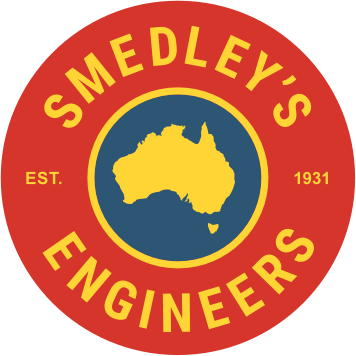Holding more than three decades of broad trailer engineering experience, Ian Thomson, Engineering Manager at BPW Transpec, is a worthy recipient of the Industry Icon mantle.
Ian Thomson has been involved with road transport and related equipment engineering for nigh on 32 years.
Starting in 1988 he spent two years at MacDonald Johnston, now Bucher Municipal, engineering road sweepers and refuse collection equipment, followed by a nine-year stint with Kockums Industries where he had significant exposure to the design, compliance and sales of the dry bulk powder tankers in which the company specialises.
Following this he took a similar role with Convair Engineering, another big name in bulk pneumatic tankers in Australia, holding this position for eight years.
Among his achievements at these two companies were the design and certification of vessels and trailer frames, enabling the correct dimensions to achieve required axle spreads for optimum weight distribution.
Ian then spent one year in the engineering department of Krueger Trailers before finding his feet as Engineering Manager at BPW Transpec.
In conjunction with this, Ian is actively involved with the ongoing refinement of ADR38 braking regulations and their application to foundation braking and trailer control systems. As a member of the HVIA and ATA Industry Technical Council and an executive member of ARTSA, Ian is also helping to steer current changes to the Road Vehicle Standards Act and developments in suspension applications for Performance-Based Standards.
Among the most significant developments he’s seen over his time in the industry are the phase-out of ‘spider’ hubs in favour of the 10- stud type and the broad introduction of air suspension, disc brakes, ABS, EBS and HML (Higher Mass Limits).
“Another massive change is the universal acceptance of tri-tri B-doubles and the increases in length from 23m to 25m and finally 26m,” Ian enthuses, before proceeding to tell an interesting yarn on the topic.
“One customer keeps reminding me that when he first contacted us with a tri-tri B-double proposal I replied, ‘You need to find someone else to build it’,” he laughs.
“This was the mid 1990s and no B-doubles were allowed to run in that area at the time. With a lot of persistence on both sides – along with numerous design layouts and council submissions – we finally managed to get local council approval for a suitable combination. From that work and the relationship formed with the customer, many subsequent orders followed.”
On the subject of the continual evolution of trailer axle manufacture and design, Ian says the quest for lower tare weight and greater durability is ongoing.
“These days there is much more production line orientated design and assembly; designs are more sophisticated, as are the types of steels, alloys and other materials being used, including adhesives.
“On the design side there has also been a strong transition from 2D CAD to 3D design packages and use of transport related simulation software.”
As for who he admires in the industry, Ian mentions Bob Pearson and the hard yards he’s done with B-doubles; Les Bruzsa with his similar work and assistance to introduce more productive vehicles and Keith MacKinlay at Bisitecniks with his ongoing efforts with compliance and testing.
This Industry Icon article was first published on trailermag.com.au
